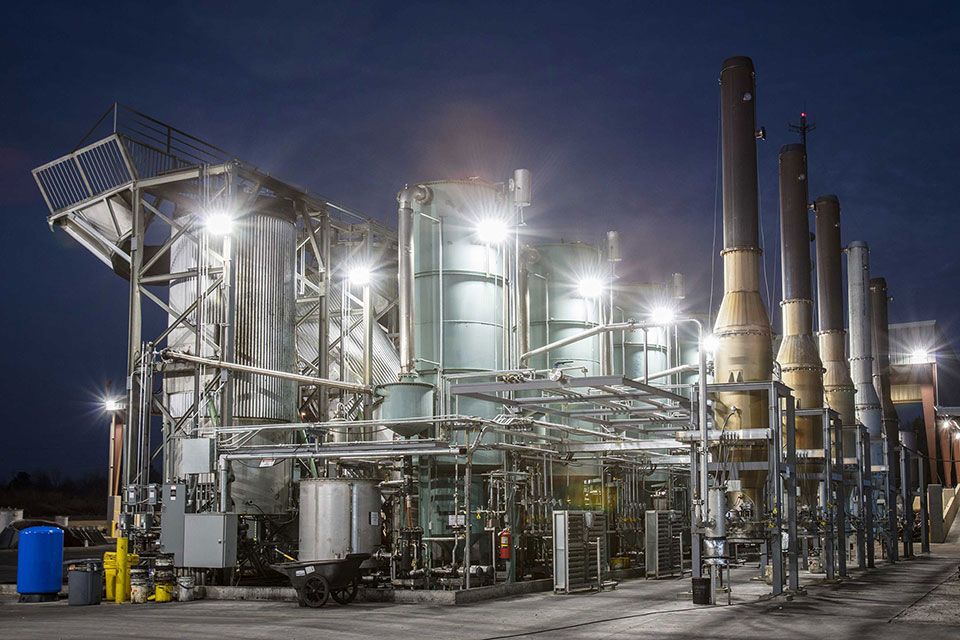
⚡ PRTI Creates a Power Platform from Waste Tires
#ICYMI, A little known, but big impact company, Product Recovery Technology International, or PRTI, is revolutionizing how the value from waste tires is realized.
Share this story!
This story is republished from our tour of the PRTI plant in August 2019
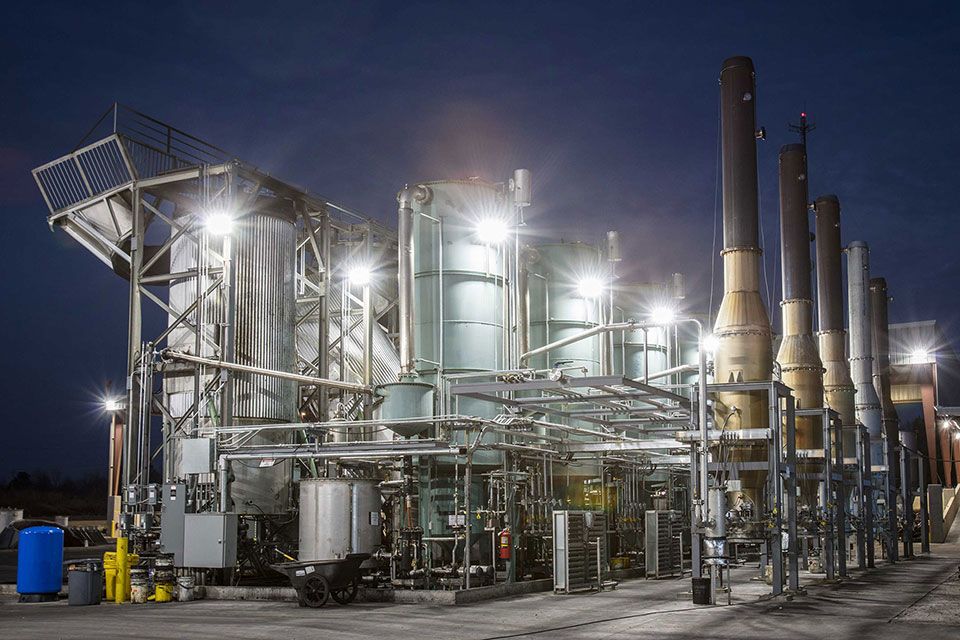
The mission of Warp Institute is to empower global communities to make a better future come sooner. One of the ways we seek to do this is by finding and sharing the best ideas that humanity has to offer.
A little known, but big impact company, Product Recovery Technology International, or PRTI, is revolutionizing how the value from waste tires is realized. They break down tires, and potentially other waste products into valuable commodities with a patented, near zero-waste process that allows the resulting byproducts to be recycled, sold, or even converted into electricity.
Warp had the opportunity to spend a day at PRTI in the small town of Franklinton in central North Carolina, USA. President and CEO, Jason A. Williams, and COO, Chris Hare gave us an in-depth look at their process, the patented technology that drives it, their passion to solve a large-scale industrial problem, and how they intend to make the clean energy future come sooner.
Turning Ideas Into Innovation
The PRTI story began when an Italian Scientist, Franco Fini, discovered a way to inject a small amount of energy into a tire and unlock a tremendous energy output in return. With an infusion of capital, a fully functional waste energy plant based on the technology was born in Italy.
For the next three years, the plant handled roughly one million tires per year. Unfortunately, a legislative roadblock hit when municipalities decided to no longer pay the plant for receiving the waste tires. In turn, the plant, and it’s investors, did not have the financial incentive to continue.
A few years later, the PRTI team came in, evaluated the process, threw a little ingenuity into the plan, and, combined with the right founding team, stepped in, gained control of the patent and brought the opportunity to the United States.
Jason and the leadership at PRTI realized that the technology was a true reversal of the traditional methods of pyrolysis in the handling of waste tires. As true visionaries, they saw the bigger opportunity – utilize the technology to create a decentralized power platform business
“The technology was a thoughtful way to unpack the tire. I wasn’t so much interested in the waste management component, although it’s a cool story that solves a legacy problem of how you get rid of tires, I was more interested in the fact that these very smart scientists had uncovered a way to penetrate the tire with a little bit of energy and unlock all the potential energy for an extended period of time.” said Jason Williams.
Historically, the common method known as pyrolysis is a reaction in the absence of oxygen. It breaks down tires by subjecting them to very high temperatures in an inert atmosphere. The problem with pyrolysis is that it requires a large amount of energy input with a small return of energy output, and is neither efficient nor cost-effective.
“Thermal DeManufacturing was the first time in tire processing I saw the mass balance flip” – Jason Williams, CEO
Jason assembled a widely diverse team of experts that includes scientists, technologists, electrical engineers, and IT professionals. It’s a cognitively diverse team, all with experience outside of waste management.
“We aren’t approaching the problem of waste management like ‘waste management people’ would.”
How big is this problem, anyway?
It’s difficult to wrap one’s head around the fact that every year over 250 million waste tires are created in the United States alone. Tires are made up of components that do not allow for natural decomposition. The most common solutions to disposing of these tires have historically been burning, burying, or grinding. All of these solutions waste energy, cost a lot of money, and are toxic to the environment.
- Over 150 million tires are currently burned every year, and each tire can release over two gallons of greenhouse gases and toxins into the atmosphere.
- Buried tires never decompose. Stored tires are a perpetual fire hazard that is notoriously difficult to extinguish and environmentally toxic.
- Grinding tires, while does recycle the material for alternative uses, has big downsides that are often overlooked. It is very costly and highly energy inefficient to grind tires. Grinding just one trailer of tires uses an amount of energy that would be sufficient to power one home for three months!
Enter PRTI
PRTI was optimistic from the onset. With a goal of a near zero-waste, revenue-generating process, they engineered a solution that recycles tires into valuable commodities in an environmentally positive way, eliminating the need for burning, burying, and grinding. Their idea, ingenuity, and hard work led to their patented process invention, PRTI’s Thermal DeManufacturing ®.
SO, WHAT IS THERMAL DEMANUFACTURING?
Jason explains it:
“When done correctly, a tire can be broken down into a variety of valuable commodities including steel, carbon, oil, and syngas.
PRTI has invented a new technology called PRTI’s Thermal DeManufacturing ®, that utilizes waste tires as a stored energy resource and unlock large amounts of energy on the back end.
The process places whole tires into a series of vertically oriented chambers that are lined with a base layer of thermal concrete. Each chamber holds approximately 6,000 pounds of tires. Once filled, a robotic lid seals the chamber, and a fully-automated process begins. PRTI’s programmable logic controllers and proprietary coding initiate an 11-hour process that requires no human interaction.
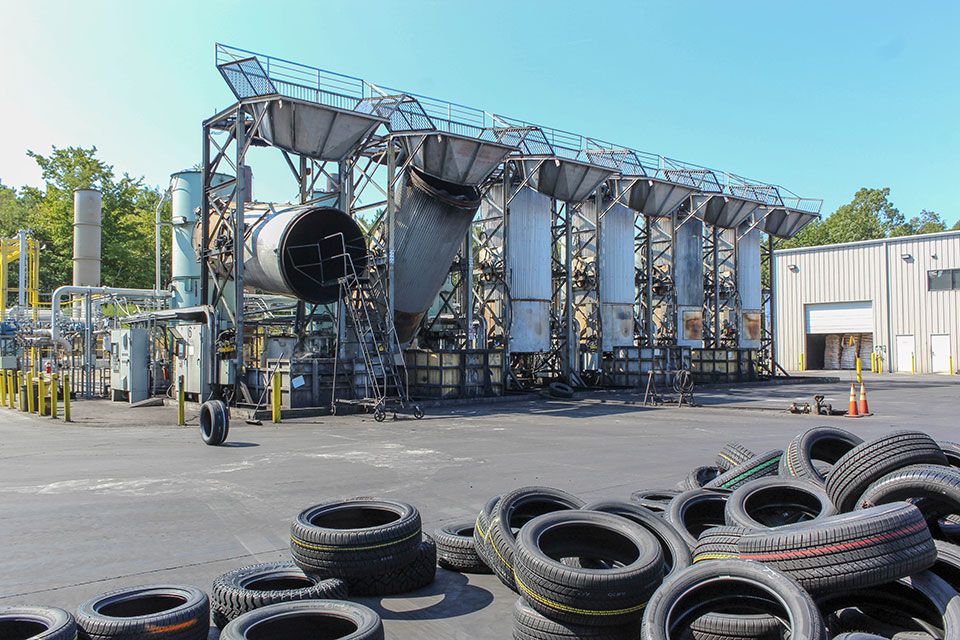
The sealed chambers are first superheated from the bottom by a very powerful propane torch for 20 minutes. During that time, ports located on the chambers allow controlled amounts of oxygen to be very violently dragged over top of the tires by vacuum pumps.
As the propane continues to heat from the bottom, a dramatic increase in temperature occurs over a short period of time without actually burning the tires. The ports are closed, and the vacuum pumps continue to draw atmosphere into the process.
From there, the computers monitor internal temperatures and pressures for 11 hours and control the ports to allow for the intake of additional atmosphere at the perfect ratio required to maintain the oxygen levels and create temperature zones that are specific for creating the right amount of commodities.
As the process continues, gravity moves the tires toward the hotspot of the sealed towers. The negative pressure of the vacuum pumps prevents volatiles from escaping into the atmosphere, and the final byproducts are then able to be extracted as oils, syngas, steel, and carbon char.
The biggest challenge faced during the creation of Thermal DeManufacturing ® is, how do you stop a superheated core within the critical 11 hour mark? PRTI coded it’s logic operators to introduce calculated intervals of steam flashes, pressure removal, and bottom-flooding with water to bring the chambers down to acceptable temperature levels that shuts down the reaction.”
In summary, the 11-hour process takes 6,000 lbs of tires (per chamber) and reduces them to 2,500 lbs. of carbon char, 700 lbs. of steel, 178 gallons of oil, and syngas that produces approximately .27 – .3 megawatts per reaction. PRTI has a total of 16 chambers that each run twice a day (22 hours of processing). All of this is done with a mere 20 minutes of propane-fueled heat and 11 hours of controlled atmosphere and gravity.
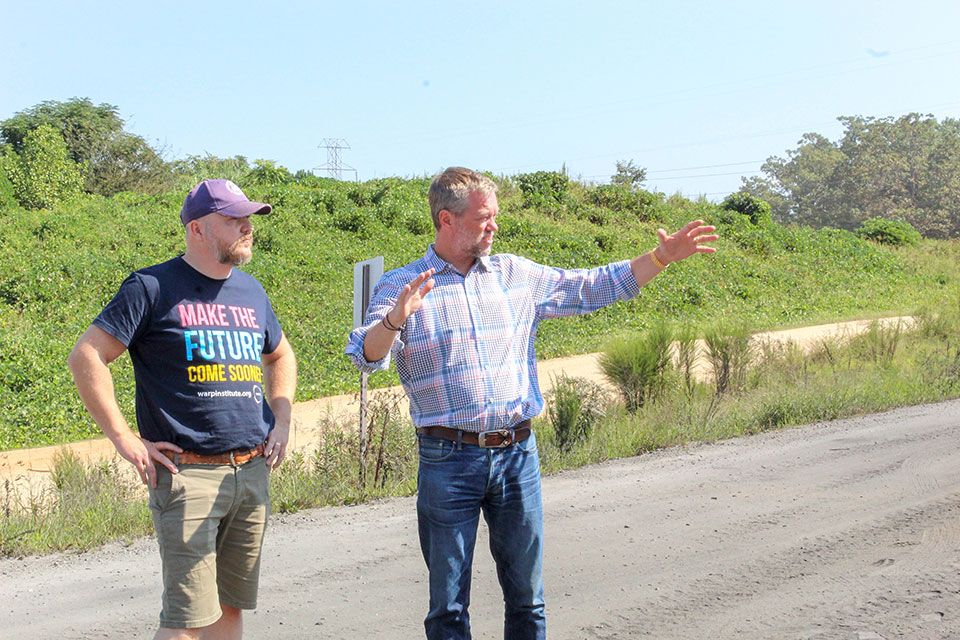
Making The Future Come Sooner with Off-The-Grid Sustainability
Arguably, the most impressive result of this process is power generation. During the site tour, Jason and Chris showed us how power is generated from the Thermal DeManufacturing ® process.
PRTI is a self-sustained operation, utilizing the power they generate to meet their electrical needs and power an impressive cryptocurrency mine where they are able to mine Ethereum at a very low cost.
“We are the world’s first waste-to-energy to cryptocurrency mine!”
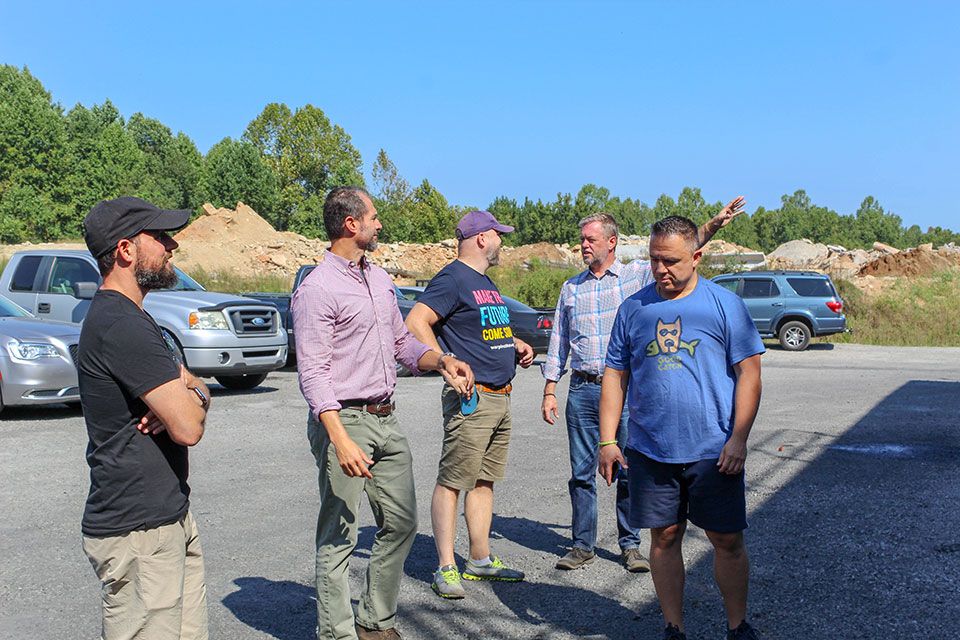
PRTI intends to one day be their own power company as an alternative supplier on a consumer scale. They even intend to expand beyond the waste tire industry alone. With aspirations from life science and space, to consumer electronics and manufacturing, PRTI has a unique perspective and a systems-level approach to problem-solving. PRTI’s long-term goal is to create technology-driven solutions for a wide range of large-scale industrial problems.
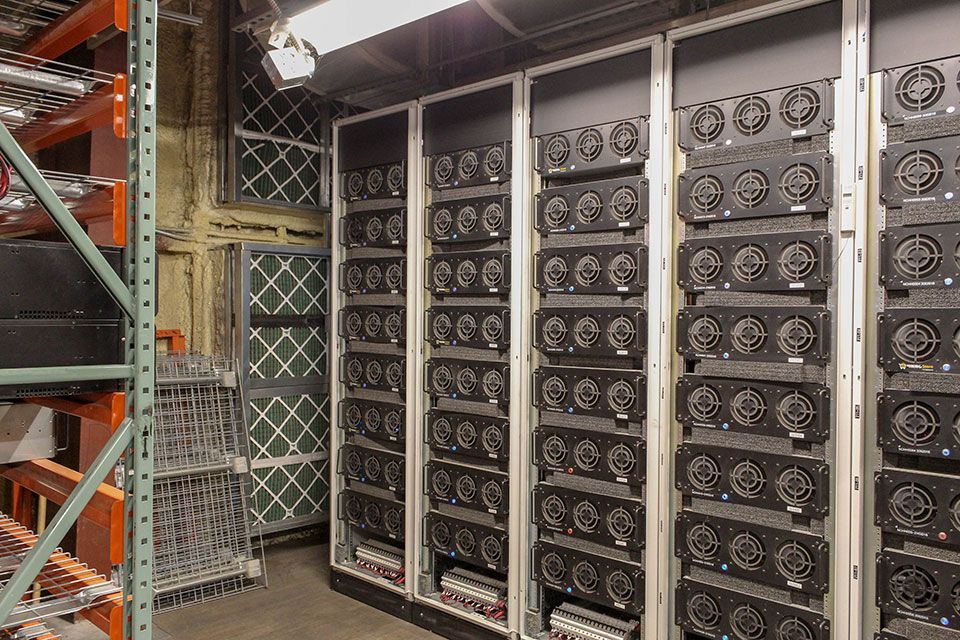
Warp Speed Ahead
Throughout our tour of the PRTI plant, it was very encouraging to see that the only real hindrance that PRTI faces today is physical space for tires.
“The demand to offload waste across the tire manufacturing industry is huge. Typically, manufacturers account for almost a 10% yield loss. One particular client in NC produces about 30,000 tires per day, and thus approximately 3,000 of those fail safety standards to be road-worthy. Companies pay PRTI to use their process (PRTI Thermal DeManufacturing ® ). Additionally, waste tires can be sourced from landfills, illegal dumpings, and retail tire replacement shops – all are revenue streams to PRTI.”
The Franklinton, NC plant can currently support over one million tires per year; far less than national statistics of waste tire accumulation which is well over 300 million tires annually. Of course, Jason and Chris have much higher intentions for what they have created and are currently in talks for major expansion.
They are in the planning stages of developing 171 additional plants throughout the United States with international opportunities in parallel.
Thermal DeManufacturing ® on this scale creates an incredibly optimistic outlook for the future of waste tire management, decentralized power generation, and reduction of greenhouse gases into the atmosphere.
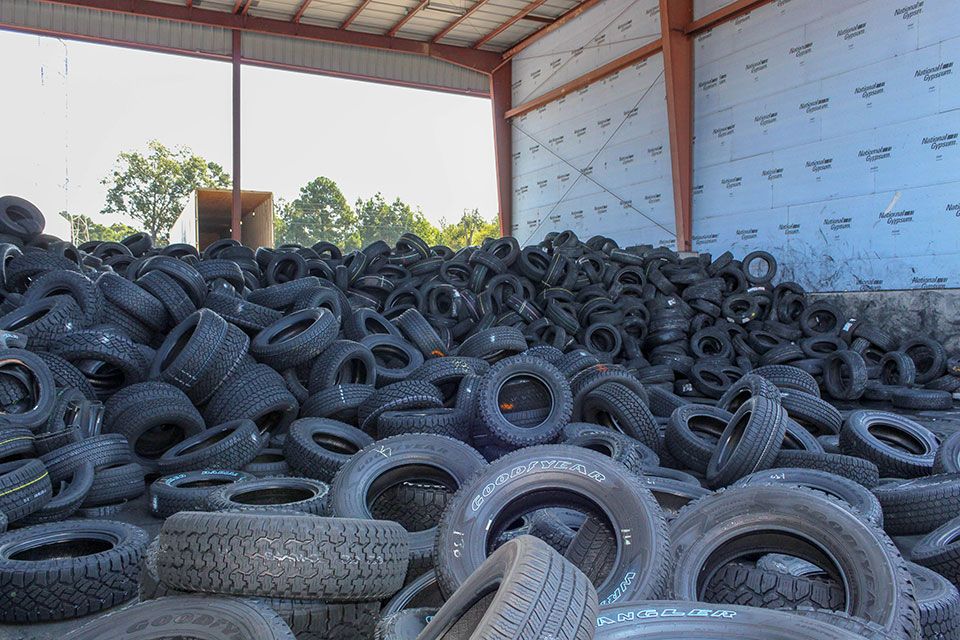
Empowering The Warp Community
We at Warp Institute were happy to be welcomed to PRTI, and glad to highlight the important work Mr. Williams, Mr. Hare, and their entire team is doing in the Green Tech, Energy, and Cryptocurrency spaces
So what can we in the Warp Community do to help?
It’s simple! Be aware of what happens to your old tires when it’s time to change them on your car.
Ask your mechanic how the old tires are disposed of.
Remember, you are charged a disposal fee whenever you change tires, so you have every right to ask that they be disposed of in an environmentally friendly way! Direct them to the PRTI website and encourage them to investigate clean alternatives available when disposing of waste tires.
Learn much more about this fascinating and impactful company at http://www.prtitech.com
By becoming a premium supporter, you help in the creation and sharing of fact-based optimistic news all over the world.


